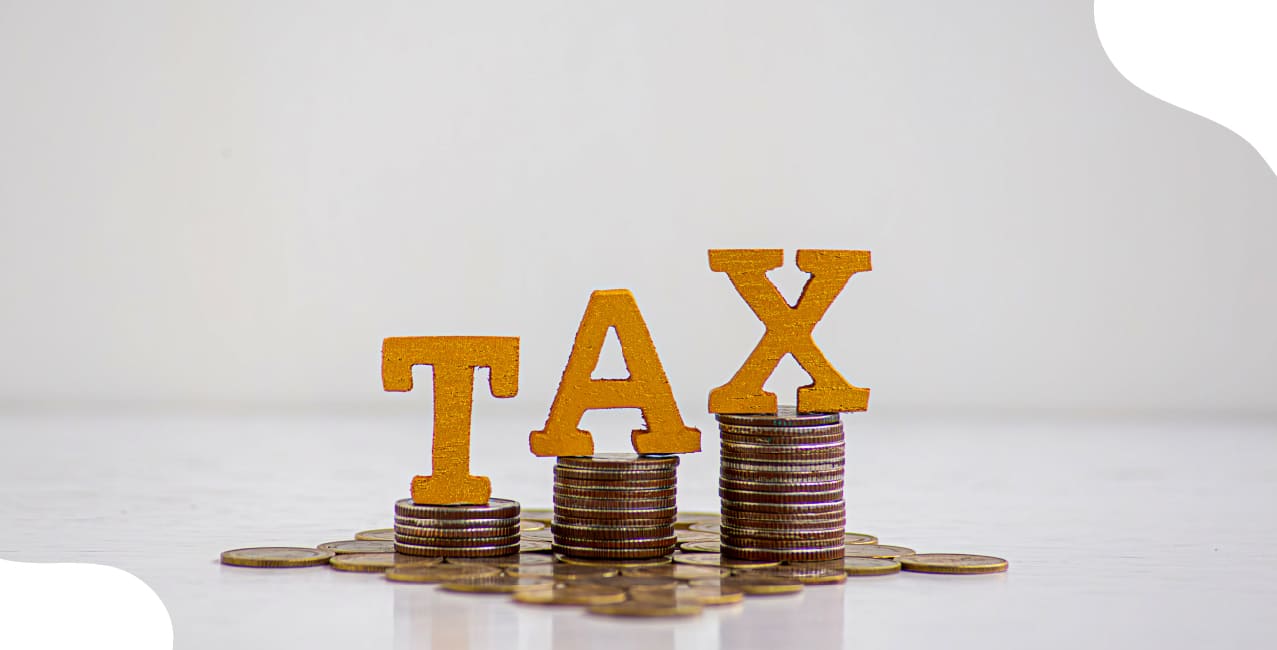
Author
LoansJagat Team
Read Time
6 Min
20 Sep 2025
GST on Goods – Tax Rates, Categories & Impact Explained
Key Takeaways
- GST is a form of indirect tax applied by the government. It has made the complicated calculations easier by providing a fixed rate to charge interest, as before, there were multiple taxes like sales tax, VAT, and many more.
- Various goods such as fresh milk, fresh fruits, fresh vegetables, meat, natural honey, prasadam, contraceptives, plastic bangles, and many more are taxed at 0%.
- Various goods such as agarbatti, lobhan, dhoop batti, dhoop, sambraani, pre-packaged and labelled natural honey, and many more, are taxed at 5%.
Goods and Services Tax (GST) is an indirect tax that applies to the supply of goods and services. It replaced multiple earlier taxes like excise duty, VAT, and sales tax with a single and unified system.
For example, Rishabh bought a refrigerator for ₹41,000 from Croma. The applicable GST rate on refrigerators is 18%. So, Rishabh needs to pay GST of ₹7,380 (₹41,000 × 18%). Now, the final bill for Rishabh’s purchase is ₹48,380.
Earlier, multiple taxes used to raise the price significantly, but GST has made tax calculation easier for both buyers and sellers. In this blog, we will explore GST, its different rates, and the goods taxed under each rate.
Types Of GST Rates And GST Rate Structure
GST works on a slab-based system, where goods are taxed at rates of 0%, 0.25%, 1.5%, 3%, 5%, 12%, 18% and 28%. These rates depend on whether the item is essential, commonly used, or considered a luxury.
Suppose Mitali bought a handbag made of cotton worth ₹1,948. This attracts 12% GST. So, she has to pay GST of around ₹234 (₹1948 × 12%). Her final bill is ₹2,182.
Mitali also bought fresh milk (₹50), fresh vegetables (₹90), fresh fruits (₹70), unroasted coffee beans (₹660), and a clay Ganesha idol (₹899). Since all these items attract 0% GST rate, her total is ₹1,769.
This structured system ensures essential goods remain affordable while higher-end goods contribute more revenue.
Goods Under 0% GST
Some goods are completely tax-free to protect consumers’ interests and reduce household expenses. The table below presents a selection of goods that are levied at a 0% GST rate:
These exemptions assist in better budget management, as consumers are not required to pay additional tax on essential items. You can check the list of GST on goods for your better understanding.
Goods Under 5% GST
This rate mostly applies to items of daily consumption that are not fully exempt but still need to remain affordable. The table below presents a selection of goods that are levied at a 5% GST rate:
This reduced rate helps maintain affordability for everyday living expenses, while simultaneously ensuring a balance between consumer relief and consistent revenue generation for the government.
Goods Under 12% GST
The 12% slab covers moderately priced goods and processed items that are beyond basic needs but are not luxury products. The table below presents a selection of goods that are levied at a 12% GST rate:
These items are taxed reasonably. It ensures that consumers can still afford them without feeling an excessive burden.
Goods Under 18% GST
This is a commonly applied GST slab that includes a wide variety of consumer and household products. The table below presents a selection of goods that are levied at an 18% GST rate:
From the above-mentioned table, you can see that the 18% GST slab is designed to balance affordability with revenue needs.
Goods Under 28% GST
This rate is reserved for luxury products and items harmful to health. Some goods also attract an additional compensation cess. The table below presents a selection of goods that are levied at a 28% GST rate:
From the above-mentioned table, you can see that the luxury products are taxed heavily.
Goods Under 3% GST
Some precious items are taxed at a special low rate of 3%. The table below presents a selection of goods that are levied at a 3% GST rate:
This special slab rate of 3% is designed to balance industry needs and revenue. You can check the list of GST on goods for your better understanding.
Bonus Tip: Gold jewelry attracts a two-part GST: 3% on the gold value and 5% on making charges. This dual taxation makes the final price more complex than applying a single GST rate.
Goods Under 0.25% GST
This represents the lowest GST slab and is applicable to specific precious stones. The table below presents a selection of goods that are levied at a 0.25% GST rate:
These items are kept under the lowest GST slab to encourage trade and support the gem and jewellery sector. This helps maintain competitiveness in both domestic and international markets.
How GST Impacts Everyday Consumers?
GST directly affects the prices of goods and services that consumers buy daily. Essential items like milk, vegetables, and cereals often attract lower GST rates, keeping them affordable, while luxury goods face higher rates, making them more expensive.
For example, if a litre of Amul milk costs ₹50 and GST is 5%, the final price becomes ₹52.50, which might sound only a small change to you initially. But imagine a family of 6 buying 3 litres of milk daily. This small change increased their yearly budget by ₹2700.
By unifying multiple indirect taxes into a single system, GST simplifies billing, reduces tax cascading, and increases price transparency. Consumers can clearly see how much tax they pay, this helps them plan budgets better.
Conclusion
GST on goods has replaced the previously applicable multiple taxes with a structured system. This provision has brought uniformity and reduced confusion.
Different rates apply to different products. Goods which are necessary are generally kept completely tax-free to reduce our household expenses.
Goods for regular use fall under 5% or 12% GST, whereas luxury and potentially harmful items are taxed at 28%. Some special goods are also taxed at 3%, 0.25%, and 1.5%.
FAQs
1. What is the full form of VAT?
VAT stands for Value Added Tax.
2. What are the four types of GST?
The four types of GST are CGST, SGST, IGST, and UTGST.
3. Can I start a business without GST registration?
Yes, if your annual turnover is less than ₹40,00,000 for goods and ₹20,00,000 for services.
4. What is the difference between GST and HSN?
GST is the tax system. HSN, or Harmonised System of Nomenclature, serves as the code to categorise goods under GST.
5. What is the full form of SAC?
SAC stands for Services Accounting Code. It is used to classify services under GST.
6. Is clothing GST-free?
GST on clothes under ₹1,000 is 5%, on clothes ₹1,000 or more it is 12%, and synthetic or man-made fibre garments are taxed at 18%.
7. What is ITC in GST?
ITC means Input Tax Credit. This allows businesses to deduct the tax paid on purchases from the tax payable on sales.
About the Author

LoansJagat Team
‘Simplify Finance for Everyone.’ This is the common goal of our team, as we try to explain any topic with relatable examples. From personal to business finance, managing EMIs to becoming debt-free, we do extensive research on each and every parameter, so you don’t have to. Scroll up and have a look at what 15+ years of experience in the BFSI sector looks like.

Quick Apply Loan
Subscribe Now


